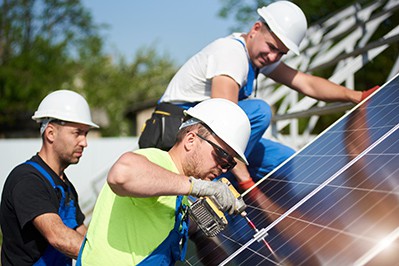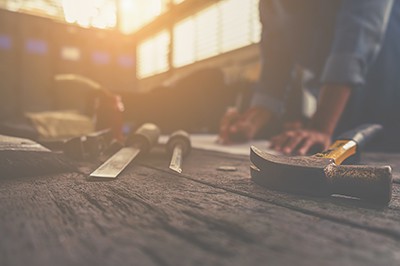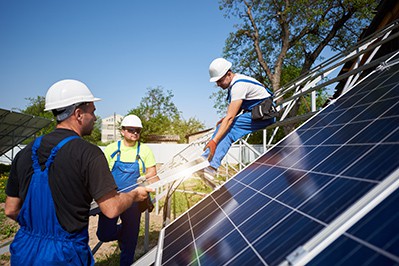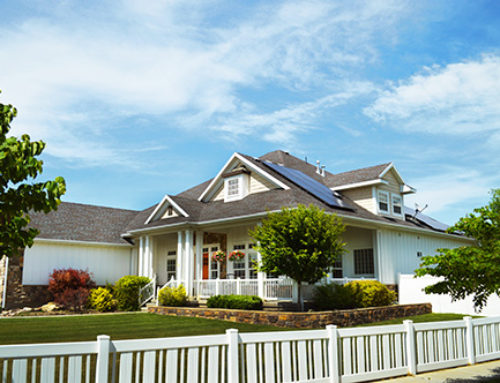How to Build Your Own Solar Panel System at Home
Whether you want to cut down or eliminate your monthly electric bill with solar power, live completely off the grid, or leave less of a carbon footprint on the environment, all of these are great reasons to learn how to build your own solar panel.

Over the years, off grid solar systems (and even on-grid) have become more common, prompting homeowners to find ways to take advantage of this useful renewable energy source. One question always comes up: Can you build a rooftop solar module on your own?
Yes, there are ways to build a DIY solar system. Here’s how.
Is it Possible?
It is certainly possible to use solar panels at home without needing the help of a solar home company. Before purchasing the panels, you must check everything first, including:
Your roof: Unfortunately, many homeowners do not inspect their roofs first before trying a DIY solar installation. It is key that your roof receives ample sunlight throughout the year; otherwise, you will not get the most out of your investment. The energy output of your traditional solar panels should be enough to replace your home’s electricity bill with clean energy.
Solar technology options: There are various solar technology types, but solar PV panels (PV stands for photovoltaic) and thermal technology are the most common today. Both harness the sun’s energy and convert it into electrons, but choose the appropriate one for your home before purchasing it. Controller automation may also be useful to track solar position and other components.
If you build your own solar panels, you should remember a few more important things:
- Know how much solar energy you require since it always depends on what you plan to do with the electrical energy stored. For instance, recharging batteries for a boat, RV, or electric scooter requires different charger volts than powering the house.
- You can buy panels online, but be careful because some websites only sell secondhand items, rejected panels, and useless ones.
- You may violate electrical codes if you don’t know about their enforcement before building the solar inverter system on your own.
You also have to learn about connecting to the grid, unless you plan to use an off grid solar system. Certain logistics are arranged depending on where you live when you connect with a utility, such as paying a fee and the time needed to hook it up. Homeowners should also learn about net solar metering, which is when utilities give the money back for properties with a home solar array at the same rate these companies charge for electricity use. Solar metering helps a solar cell system become more profitable for the owner by paying them for excess solar energy.
Are You Skilled Enough?
You may already have expert directions with you and even controller automation that incorporates instructions given for the equipment.

They may give you the confidence to install the PV panel system on your own, but they do not guarantee the life and efficiency of the solar module you have built. It is possible that within a few months, you’ll end up with a panel that no longer works because of extreme temperature changes, moisture inside the panels, or flaws in its design or installation.
It is not enough that you have the needed instructions for building the panels; you also require the skills required for solar cell installation. These panels are sturdy, allowing them to survive several years even under harsh weather conditions.
So if you want to build your own without professional help or at least minimal assistance from a solar home company, you need to spend lots of time researching and gaining experience. In particular, you will need to become familiar with soldering and electrical wiring. This way, you can match the manufactured products with the right components that optimize sunlight gathering even during harsh weather conditions. DIY solar installation is hard work, but building your PV cells means matching solar panel manufacturers’ installation abilities.
Where to Get the Needed Materials
There are many places online where you can purchase a solar inverter system and other kits to complete your solar PV module.

If you plan to buy at certain sites, such as eBay, you have to be sure of its quality. Most of the time, the cells available online are already used or did not pass quality control checks.
You may want to source the materials required for building a rooftop solar power system. This way, you do not have to worry about the contractor’s markups and even wiring and installation expenses.
Here are some tips for buying the materials required:
Solar cells: If you plan to buy solar cells online, be sure to evaluate their manufacturer and seller before buying. Some companies offer solar cells from China, which often have the best prices, although their quality may be questionable. Japanese ones typically have good price and performance, while American-made ones are considered to have the best performance yet can be pricey. Choose the right type for your budget and buy a couple of cells first, with enough voltage to charge your RV, trolling motor, or a few appliances in the house.
Tools: You will need a soldering iron and solder. You also need flux, solder paste, a wooden board, protective glasses, and a saw. To measure amperage and voltage, you should get a multimeter as well. And have your pencil and ruler handy, too.
Other materials you may need include:
- Glass sheets
- Blocking diode
- Tab and bus ribbons
- Junction box
- Terminal block
- Heat shrink tubing
- Sealant
- Aluminum angle bar
- Tile crosses
- Inverter
List all the materials you need and look for a shop where you can purchase them. Most of the time, you will need to visit several local and online shops to get everything you require for solar panel installation.
How to Build Your Own Solar Panel System
Once you have all the items needed, you can start building the system. To make things easier, you can get pre-configured solar panel kits, which contain solar panel PV systems and inverters.
Before buying the solar kit, you should check if the following parts are in the set:
- DC cables
- Disconnect switches
- Mountings
- Waterproof junction box
- Conduit
- Electrical plan for creating the permits
Depending on which DIY solar panel kit you get, you will also need a subpanel. Make sure it is in the solar kit as well.
The Cost to Do It Yourself
The wholesale cost of panels has now gone down compared to before. You can often see that they are priced at $1 for every watt, which makes these panels more economical than ever. Ideally, you should purchase a cell that does not go over $1.3 per watt.
The easiest way to calculate how much you need to spend is by calculating dollars per watt. Dollars per watt indicates the amount of money the available electricity production costs on average. On average, homeowners pay $3.05/watt, which is the average cost for a 6kW system. It means the whole installation process will be around $18,300 before rebates and tax credits.
Pros and Cons of DIY Solar Panels
DIY solar panel installation allows you to save more than having a professional do it for you.

Solar kits have become more affordable than a pro service, which can cost at least $7 per watt. Therefore, a 5kW system is around $35,000 (at least) before incentives. Installing on your own means you do not have to pay for the installation expenses, giving you about $4-per-watt or a total of $15,000 worth of savings for a 5kW system.
Making a DIY solar power system becomes easier every year. There are tons of solar kits online or at a local hardware store to help you get started. You can get a complete home solar array and start installing it. With a professional installer, you may be required to wait several weeks so the company will get the equipment and give you the schedule of the installation.
Net solar metering is also a benefit in which this solar incentive lets you store energy and send the excess to the grid. Many companies will repay you for the electricity you produce.
